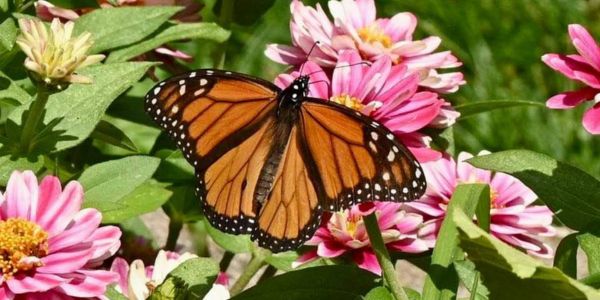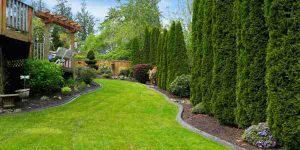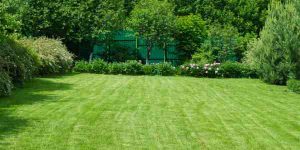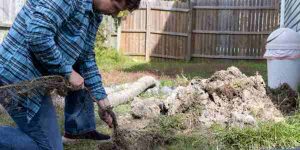Wildlife-Friendly Garden for Birds, Bees & Butterflies

Your Garden Oasis: A Haven for Birds, Bees, and Butterflies
Many of us design our landscapes with aesthetics and functionality in mind. But what if you could create a stunning outdoor space that also benefits the environment? Wildlife-friendly landscaping is a growing trend that allows you to embrace nature’s beauty while providing a haven for essential pollinators and fascinating creatures.
Impact Landscapes explores how you can transform your garden into a vibrant ecosystem teeming with birds, bees, and butterflies. By incorporating these wildlife-friendly practices, you’ll not only witness the delightful return of these creatures but also contribute to biodiversity conservation.
Why Wildlife-Friendly Landscaping Matters
Urbanization and habitat loss pose significant threats to wildlife populations. Our once-lush ecosystems are shrinking, forcing birds, bees, and butterflies to struggle for survival. By creating wildlife-friendly landscapes, we can offer these creatures a much-needed refuge.
Here’s how your garden sanctuary can make a difference:
- Supports Pollinators: Bees, butterflies, and other pollinators are crucial for maintaining healthy ecosystems. They ensure the reproduction of flowering plants, including many of our fruits and vegetables. By providing them with food and shelter, you contribute to a thriving pollinator population.
- Enhances Biodiversity: A diverse landscape attracts a wider variety of wildlife. This creates a more balanced ecosystem, where different species play essential roles in maintaining a healthy environment.
- Natural Pest Control: Birds can help control insect populations that might otherwise damage your garden. Ladybugs and other beneficial insects attracted by your wildlife haven can also keep harmful pests in check naturally.
- Connects You with Nature: Witnessing the vibrant life in your garden provides a sense of connection with the natural world. It’s a source of relaxation and joy to observe the fascinating behaviors of birds, bees, and butterflies.
Creating a Wildlife Paradise: Essential Steps
Transforming your landscape into a wildlife haven is easier than you might think! Here are some key steps to get you started:
- Embrace Native Plants: Native plants are perfectly adapted to your local climate, soil conditions, and wildlife. They provide a reliable source of nectar, pollen, and seeds for birds, butterflies, and bees. Research native plant species in your region and incorporate them into your garden design.
- Design a Pollinator Paradise: Create a designated area specifically for attracting pollinators. Choose a sunny location and plant a variety of flowers with staggered bloom times. This ensures a continuous food source throughout the season. Popular pollinator-friendly options include coneflowers, milkweed (essential for monarch butterflies), bee balm, and lavender.
- Provide Food and Shelter for Birds: Birds need more than just seeds. Include plants that produce berries and fruits for year-round sustenance. Additionally, consider installing nesting boxes in sheltered areas with dense vegetation to provide safe havens for raising young.
- Don’t Forget the Water Source: A shallow birdbath, fountain, or even a strategically placed puddle provides essential hydration for birds, bees, and butterflies. Moving water is especially attractive, as butterflies use it to cool down.
- Minimize Chemical Use: Pesticides and herbicides harm not only target pests but also beneficial insects and pollinators. Opt for natural pest control methods whenever possible, and choose organic fertilizers to keep your garden healthy without harming wildlife.
Beyond the Basics: Additional Tips for Wildlife Enthusiasts
Once you’ve established the fundamental elements of a wildlife-friendly landscape, you can take your haven to the next level with these additional tips:
- Create a Layered Landscape: Planting a variety of plants with different heights creates a layered effect. This provides diverse habitats for different species. Trees offer shade and nesting sites for birds, while lower-growing shrubs and flowers provide shelter and foraging grounds.
- Let Nature Take its Course: A bit of controlled chaos can benefit your wildlife haven. Leaving some fallen leaves and dead branches creates natural hiding places for insects and provides shelter for overwintering butterflies.
- Offer Nesting Material: Place bundles of twigs and loose bark in discreet locations to encourage solitary bees to create their nests.
- Be Patient: Creating a thriving wildlife habitat takes time. Observe your garden and see which plants and features attract the most visitors. Adapt your design based on your observations to create an even more welcoming environment.
Witnessing the return of birds, bees, and butterflies to your garden is a truly rewarding experience. By embracing wildlife-friendly landscaping, you’ll not only create a beautiful outdoor space but also contribute to a healthier planet. Impact Landscapes is here to help you design and cultivate a garden that flourishes with life. Contact us today to discuss your vision for a wildlife haven in your own backyard!



